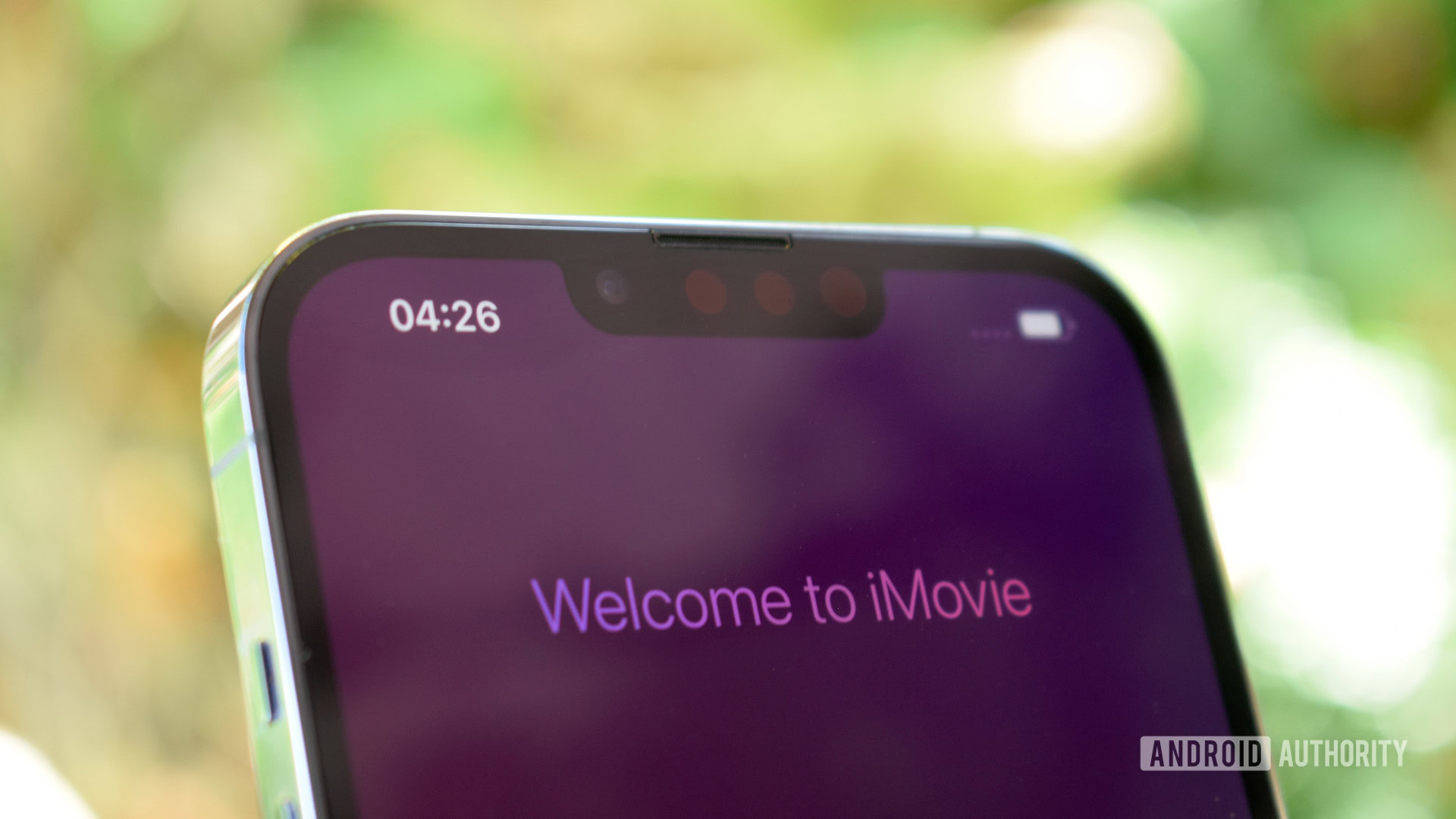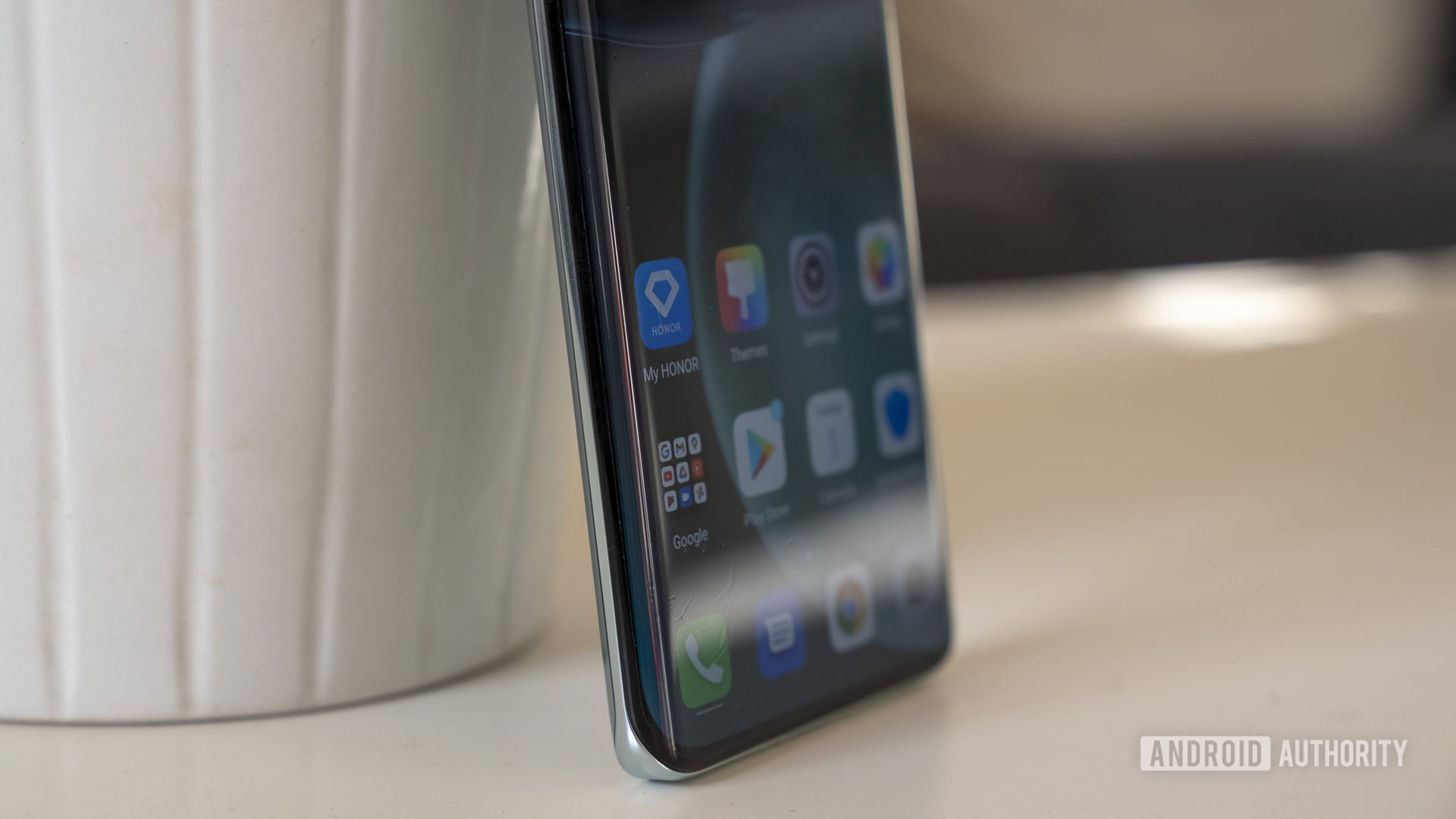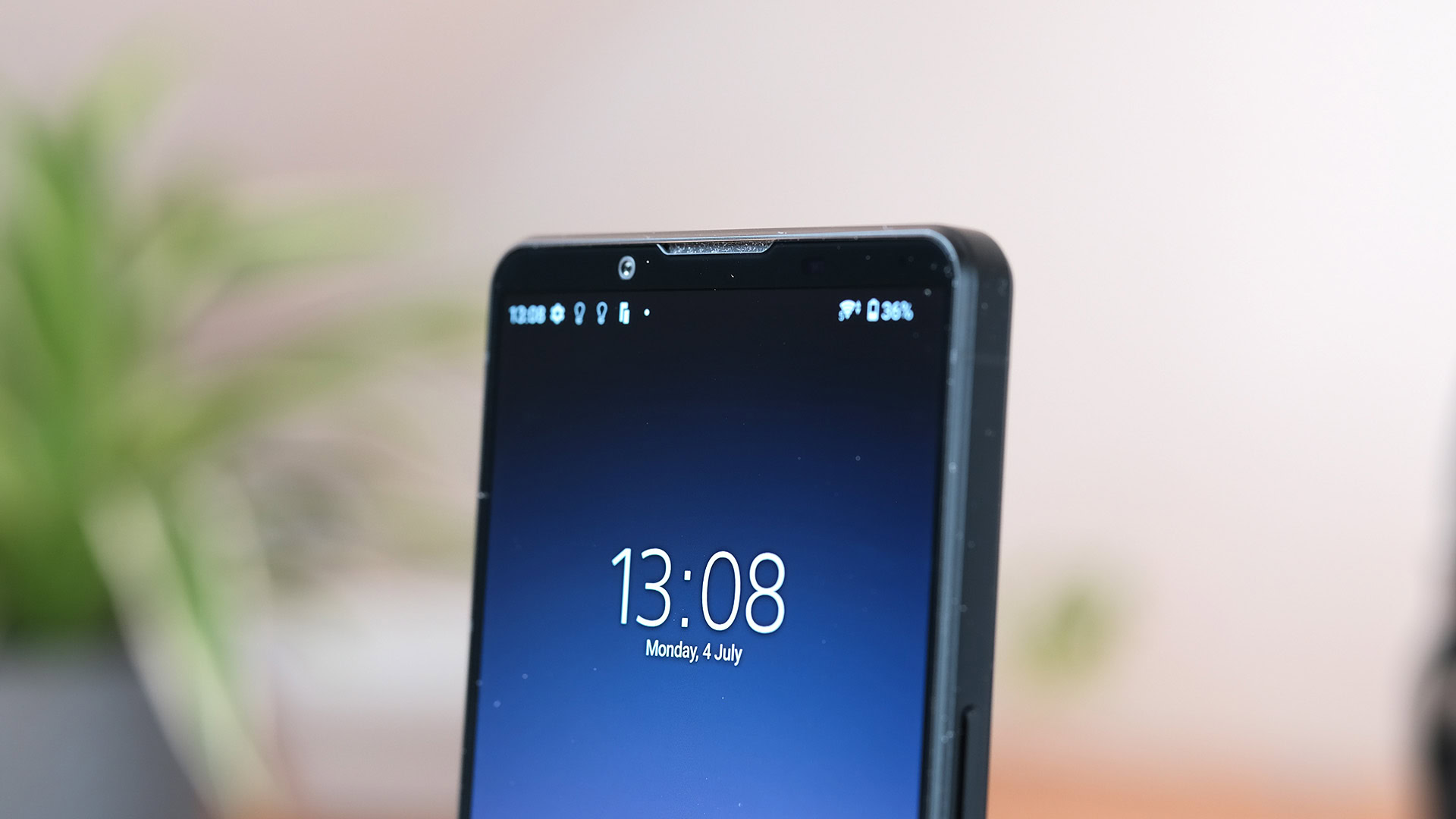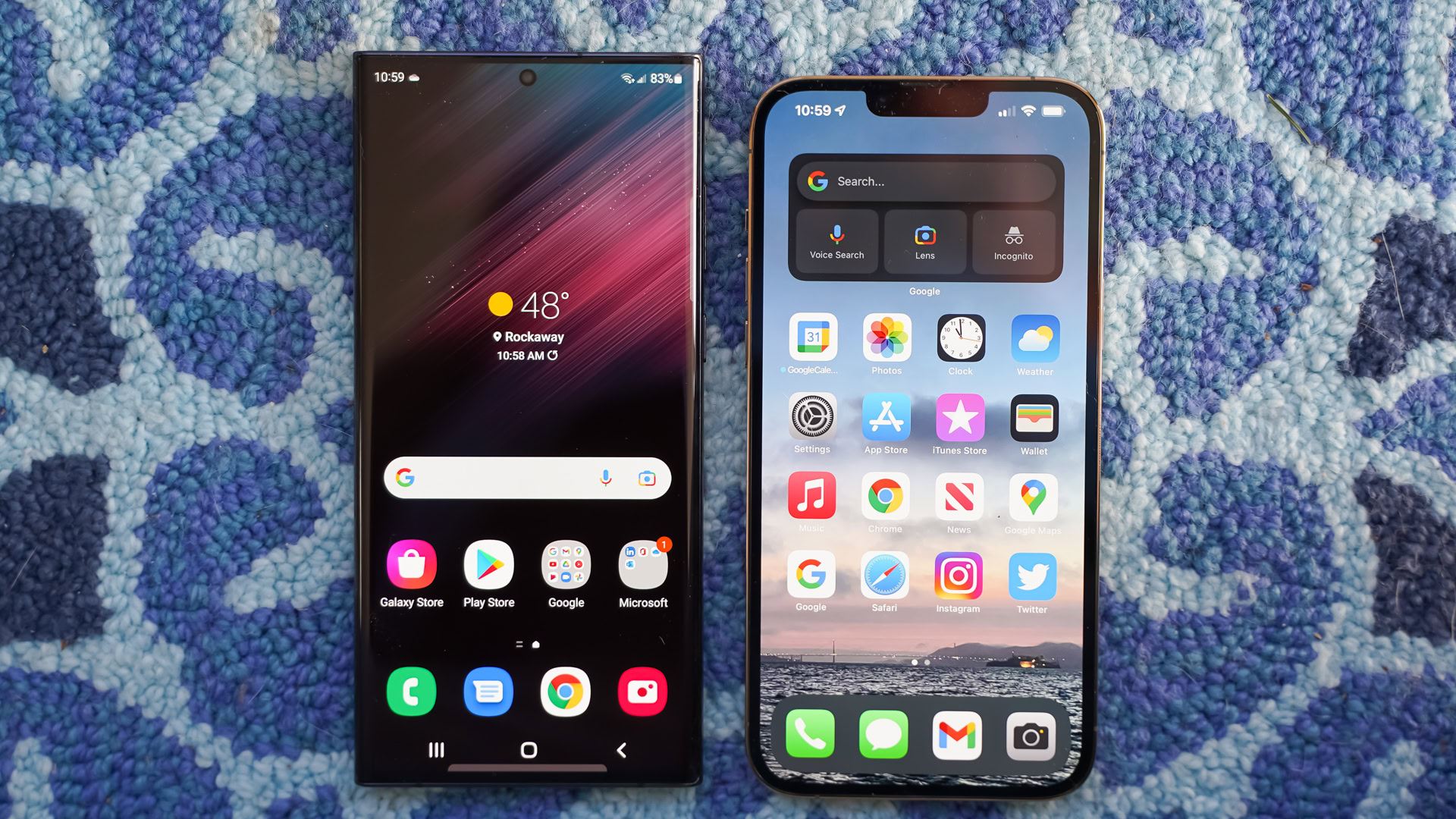Affiliate links on Android Authority may earn us a commission. Learn more.
The iPhone is the only uncompromising flat flagship and I'm tired of the envy

In 2014, Samsung launched the Galaxy Note Edge. The phone was notable for having a single curved side, which was one of the first times we had seen this design technology. The device was a hot talking point for a bit, but consumers weren’t particularly interested in shelling out for one. Flat Android phones continued to be the norm and Samsung phones with “Edge” branding eventually faded into obscurity.
However, the curved display — or “waterfall display,” as it’s sometimes called — has continued to exist. Sure, it hasn’t been a star feature of phones like Samsung tried to do with the Note Edge and subsequent Galaxy S6 Edge, but it continues to be a hallmark of a more premium smartphone experience. Devices such as the Galaxy S22 Ultra, OnePlus 10 Pro, and Google Pixel 6 Pro all have curved sides, for example. Meanwhile, the less expensive counterparts of those three phones all have flat displays.
Android’s biggest competitor Apple doesn’t care much for curved displays, though. The last iPhone line with curved edges was the iPhone 11 series, though these didn’t intrude on the actual display area. The most recent iPhone 13 series had totally flat displays across the board, and we expect to see the same in the iPhone 14 series soon.
Do you like curved displays?
Now, it is still very easy to get flat Android phones. However, for whatever reason, almost all Android OEMs have collectively decided that curved glass is a premium feature, so most premium phones come with it. While premium Android handsets with flat displays certainly exist, they usually come with certain caveats. This leaves the iPhone series the only non-compromising premium smartphone experience with flat displays.
Frankly, I’m tired of curved glass and looking on in envy at flat iPhones. I really hope the major Android brands can see the light and start offering their premium models with flat screens.
Related reading: Our Apple iPhone buying guide
Curved vs flat Android phones

The number one reason OEMs think that “curved glass = premium” is because of content consumption. A phone with a curved display will have perceptively smaller bezels. The curved sections will make it seem like video and gaming content is just floating there in front of you.
Outside of this, curved displays are only bad.
The most obvious problem with curved displays is that they make your phone more fragile. If you drop your phone and it lands on one of its sides, you’re going to have a much higher chance of a busted display if it’s curved as opposed to if it’s flat. Flat displays simply have more cushion between the glass and the floor. An interesting side effect of this is that smartphone cases are better for flat displays because they don’t need to leave the sides exposed for curved glass. This makes flat phones even more durable.
Curved displays have one singular benefit, which just isn't enough.
The second problem with curved displays is Android’s navigation system. If you want to conduct a back gesture, it is far easier to do so by sliding in from the outside of a flat display than it is a curved one, especially if that curve is drastic. Generally, the more subtle curves of 2022 phones don’t make this quite as tricky, but if you put those phones into a case it can still be a real problem. In fact, our readers have told us they are unhappy with case designs in general, and this is one reason why.
Finally, curved displays are inherently more expensive to produce when compared to flat displays. This drives up the bill of materials cost for a smartphone which, inevitably, drives up the price for the buyer. That means a more expensive phone without much tangible gain to the user.
Really, curved Android phones just look cool. That’s it. Once you break down their usefulness compared to flat Android phones, you realize that you’d be a lot better off without a curve.
You have choices… if you don’t mind compromises

There are probably plenty of people reading this thinking to themselves, “I own a great Android phone with a flat display, so I don’t know what this guy is going on about.” I will readily concede that there are plenty of stellar flat Android phones out there. The Google Pixel 6, for example, is an exceptional phone with a flat display. It even walked away with an Editor’s Choice award in our review and we crowned it as 2021’s phone of the year.
However, the Pixel 6 is missing a telephoto lens, which is something higher-end phones have, plus it has a lower refresh rate/resolution screen. Thus, you already have a handful of compromises you’re making to stick with that flat display. Of course, you can always upgrade to the Pixel 6 Pro to get a telephoto lens and a 120Hz QHD+ panel — and get saddled with a curved display.
The world of Android is filled with phones such as these: phones with flat displays but also various compromises. Here are some notables:
- Sony Xperia 1 IV — This phone has a gorgeous display without the usual interruption of a selfie camera. It looks astounding and its flat sides keep the phone user-friendly. It even has a headphone jack and a microSD card slot! Of course, the phone also has awful software support and an absolutely bonkers price of $1,599.
- ASUS ROG Phone 6 Pro — This is another phone with a totally flat and uninterrupted display. However, like the Pixel 6, it lacks a telephoto sensor on the back. Also, like the Xperia 1 IV, it has a dismal software promise. When you throw in that it is one of the biggest/heaviest phones on the market with an eye-watering price of around $1,300, you have yet another phone with plenty of compromises — one that’s only really intended to appeal to gamers.
- Samsung Galaxy Z phones — The Galaxy Z Fold 4 and Galaxy Z Flip 4 both have flat displays inside and out. However, they are foldable phones which may or may not be your cup of tea. They also don’t have the best cameras, especially the Flip model. Obviously, they are quite expensive, too, with the Galaxy Z Fold 4 starting at $1,799.
- Samsung Galaxy S22 Plus — Honestly, this is probably as close as you can get to a perfect flat Android phone. Unfortunately, the vastly superior Galaxy S22 Ultra exists with a much better camera system, a much bigger battery, a higher-resolution display, more RAM, and more internal storage options. If you’re wanting the very best ultra-premium phone, it’s hard to want the Plus after looking at the Ultra.
Meanwhile, the iPhone 13 Pro and Pro Max exist as literally the best of the best from Apple (at least for now, until the iPhone 14 variants come along). Both have flat displays. There are no compromises when compared to other iPhones. You get the best iPhone available and a flat display. This simplicity makes me quite envious.
Android OEMs, please hear my call

The best thing about the world of Android compared to the world of iOS is our wealth of choices. There is no gaming iPhone. There isn’t an iPhone designed for use as a professional photography tool. You can’t get a rugged iPhone. Apple has launched at most five iPhones each year for the past few years, while Android OEMs launch dozens.
So why can’t I find a terrific no-compromise Android phone with a flat display?
What I want is a Galaxy S22 Ultra with a flat display or a Google Pixel 6 Pro without the curves. I want the phones that could potentially become the best of the year to have at least the option of a flat display.
Just give me a phone that matches a Pixel 6 Pro or Galaxy S22 Ultra but with a flat display.
Obviously, companies aren’t going to start giving us the choice for a flat display like they give us the choice for internal storage capacities. The Galaxy S23 Ultra isn’t going to have separate flat and curved versions. However, why does it need to have a curved version at all? Do consumers really want curved displays, or is this something Android OEMs have convinced themselves we want without actually asking? Is this another bizarre decision like killing the headphone jack, removing the microSD card slot, or refusing to offer 512GB or 1TB models of devices? Why do phones need to curve at all?
Until companies just knock it off already with the curves, I guess I’ll need to look on in envy at the upcoming iPhone 14 Pro. I’m pretty sick of envying iPhones, though.